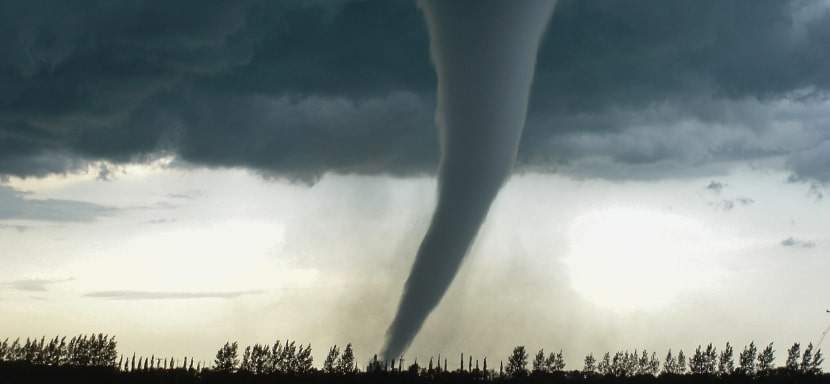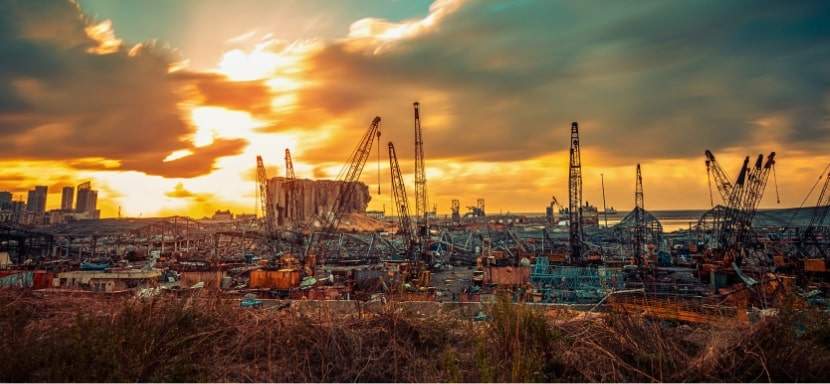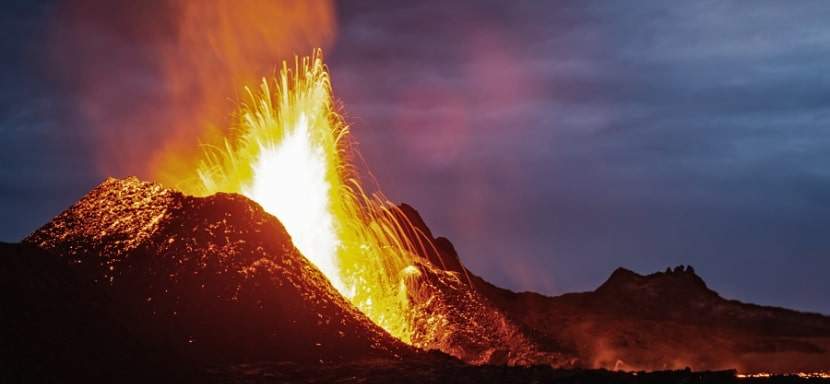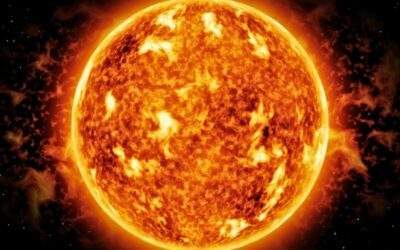The Most Tragic Times in Human History
History is replete with moments that have tested humanity’s resilience and grit.
From natural disasters to manufactured catastrophes, these tragic times have left indelible marks on the fabric of societies, shaping human development in profound ways.
Yet, amidst the darkness, the enduring spirit of humanity shines through as we remember, learn, and grow from these experiences.
This article explores some of the most poignant tragic times in history, reflecting on their impact and the lessons they offer for the future.
Did You Know?
The 1918-1919 Spanish Flu infected about one-third of the world’s population and killed an estimated 50 million people, leading to significant advancements in public health practices.
The Most Tragic Times in Human History
This list chronicles some of the most profound tragedies in human history, highlighting events that have significantly shaped our world.
From the ancient eruption of Mount Vesuvius to the contemporary COVID-19 pandemic, each entry reflects a period of profound loss and enduring resilience.
As you explore these moments, consider the lessons they offer in compassion, preparedness, and humanity’s collective strength in overcoming adversity. This compilation serves as a solemn reminder of our past and a call to remember and honor the resilience of the human spirit.
- A.D. 79 Mount Vesuvius Eruption – The eruption buried the cities of Pompeii and Herculaneum, killing thousands.
- 526 Antioch Earthquake – One of the deadliest earthquakes in history, causing significant loss of life.
- 1347-1351 The Black Death – This bubonic plague pandemic ravaged Europe, Asia, and Africa, killing an estimated 75-200 million people.
- 1556 Shaanxi Earthquake – The deadliest earthquake, killing approximately 830,000 people in China.
- 1815 Eruption of Mount Tambora – The largest volcanic eruption in recorded history, with up to 90,000 killed, leading to the “Year Without a Summer.”
- 1845-1849 The Great Famine (Ireland) – A period of mass starvation, disease, and emigration in Ireland caused by potato blight.
- 1871 Peshtigo Wildfire (Wisconsin) – This remains the deadliest wildfire in American history, claiming approximately 1,200 to 2,500 lives and burning over 1.2 million acres.
- 1883 Krakatoa Eruption (Indonesia) – One of the most violent volcanic events in recorded history occurred in Indonesia, leading to over 36,000 deaths and significant global climate effects.
- 1887 Yellow River Flood (China) – One of the most catastrophic natural disasters ever recorded, with an estimated 900,000 to 2 million deaths, the river’s banks were breached, inundating millions of acres of farmland and devastating numerous communities.
- 1888 Great Blizzard (United States) – One of the most severe recorded blizzards struck the Northeast, claiming over 400 lives and paralyzing cities with up to 50 inches of snow and winds exceeding 45 miles per hour.
- 1912 Sinking of the Titanic – The tragic sinking of the RMS Titanic, one of the deadliest maritime disasters in peacetime history, occurred after the ship struck an iceberg in the North Atlantic Ocean. This catastrophic event led to the loss of over 1,500 lives and prompted significant improvements in maritime safety regulations, including lifeboat requirements and ice patrol services.
- 1914-1918 World War I – A global conflict that resulted in millions of deaths and reshaped international relations.
- 1915-1917 The Armenian Genocide – The Ottoman government’s systematic extermination of its minority Armenian subjects.
- 1918 Cloquet Wildfire (Minnesota) – Fueled by drought and exacerbated by railroad sparks, it became one of the deadliest wildfires in U.S. history, destroying entire towns and resulting in over 450 deaths and thousands of displaced people.
- 1918-1919 Spanish Flu Pandemic – One of the deadliest pandemics in history, infected about one-third of the global population and resulted in an estimated 50 million deaths worldwide, significantly impacting public health practices and policies.
- 1925 Tri-State Tornado (United States) – The deadliest tornado in U.S. history swept through Missouri, Illinois, and Indiana, claiming 695 lives, injuring over 2,000 people, and destroying thousands of homes in its unprecedented 219-mile-long path, resulting in about $1.4 billion in damage.
- 1931 China Floods – Among the deadliest natural disasters ever recorded, causing as many as 4 million deaths.
- 1937 Hindenburg Disaster – The Hindenburg disaster marked one of the most infamous airship accidents. It occurred when the German passenger airship LZ 129 Hindenburg caught fire and was destroyed during its attempt to dock in New Jersey, USA. This tragedy resulted in 36 fatalities and effectively ended the era of commercial airship travel, leading to increased safety measures in aviation.
- 1939-1945 World War II – The deadliest conflict in human history, resulting in tens of millions of deaths and the Holocaust.
- 1941 Pearl Harbor Attack (December 7) – A surprise military strike by the Japanese Navy against the United States led to the U.S. entering World War II, resulting in over 2,400 American deaths and marking a pivotal moment in global military history.
- 1950-1953 The Korean War – Often referred to as “The Forgotten War,” resulted in the division of Korea and caused an estimated 2.5 million casualties, showcasing the global impact of post-World War II geopolitical tensions.
- 1955-1975 The Vietnam War – a prolonged conflict that deeply divided the United States and led to the deaths of over 3 million people, including 58,000 American soldiers, highlighting the complexities and tragedies of Cold War-era interventionism.
- 1970 Ancash Earthquake and Avalanche (Peru) – The deadliest avalanche in history buried the towns of Yungay and Ranrahirca under ice and rock, resulting in up to 70,000 deaths and marking one of the most tragic natural disasters of the 20th century.
- 1970 Bhola Cyclone – The deadliest tropical cyclone on record, hitting East Pakistan (now Bangladesh) and West Bengal, India.
- 1972 Iran Blizzard – Considered the deadliest blizzard in history, with snow reaching up to 26 feet in some areas and causing the deaths of approximately 4,000 people, showcasing the extreme vulnerability of the rural regions to natural disasters.
- 1984 Bhopal Gas Tragedy – One of the worst industrial disasters, causing thousands of deaths and long-term health issues.
- 1986 Chernobyl Disaster – The worst nuclear power plant accident in history, occurring in the Soviet Union (now Ukraine).
- 1989 Daulatpur-Saturia Tornado (Bangladesh)—One of the deadliest tornadoes on record, this tornado ravaged the Manikganj district, claiming approximately 1,300 lives and destroying thousands of homes. It highlighted the region’s susceptibility to severe weather events.
- 1991 Desert Storm – the 1991 military operation led by a coalition force from 35 nations initiated to expel Iraqi troops from Kuwait marked a significant moment in military history with its extensive use of advanced technology and media coverage, resulting in around 25,000 Iraqi casualties and minimal coalition losses.
- 1993 World Trade Center Bombing – A terrorist attack targeting the North Tower killed six people, injured over a thousand, and signaled the emerging threat of international terrorism to the United States, setting a precedent for future security measures.
- 1994 Rwandan Genocide – 100 days of mass slaughter of Tutsi and moderate Hutu in Rwanda.
- 1995 Oklahoma City Bombing – a domestic terrorist truck bombing of the Alfred P. Murrah Federal Building marked one of the deadliest attacks in U.S. history, killing 168 people, injuring over 600, and highlighting the threat of domestic terrorism.
- 2001 September 11 Attacks – A series of four coordinated terrorist attacks by the Islamic terrorist group al-Qaeda against the United States.
- 2004 Indian Ocean Earthquake and Tsunami – One of the deadliest natural disasters, killing over 230,000 people in 14 countries.
- 2010 Haiti Earthquake – A catastrophic magnitude 7.0 earthquake struck Haiti, causing over 200,000 deaths.
- 2011 Tōhoku Earthquake and Tsunami – Japan’s devastating earthquake and tsunami led to the Fukushima nuclear disaster.
- 2017 Hurricane Harvey – A Category 4 storm that hit Texas and Louisiana caused catastrophic flooding, leading to 68 direct deaths and an estimated $125 billion in damage, making it one of the costliest natural disasters in U.S. history.
- 2017 Las Vegas Mass Shooting – One of the deadliest mass shootings by a lone gunman in U.S. history occurred during a music festival, resulting in 60 deaths and over 800 injuries, highlighting urgent concerns about gun violence and public safety.
- 2020 Beirut Explosion – A massive explosion in the port of Beirut, Lebanon, caused by the accidental detonation of ammonium nitrate.
- 2020-2022 COVID-19 Pandemic – An ongoing global pandemic caused by the novel coronavirus SARS-CoV-2, leading to millions of deaths worldwide.
The Wrath of Nature
Earthquakes, floods, wildfires, and hurricanes rank among the most devastating natural disasters in our tragic history.
Earthquakes that Shook the World
An earthquake is classified as shaking the Earth’s surface caused by the sudden release of energy in the Earth’s lithosphere, leading to seismic waves. This release of energy usually results from the movement of tectonic plates, volcanic activity, or other stressors within the Earth that cause the plates to shift or fracture.
Earthquakes can vary in size, from those so weak that they cannot be felt to those strong enough to toss people around and destroy entire cities. The intensity and magnitude of an earthquake are measured with seismographs, with the magnitude scale (such as the Richter scale or moment magnitude scale) quantifying the energy released.
Throughout history, earthquakes have repeatedly demonstrated the immense power beneath our feet. From the ancient ruins of civilizations to modern cities grappling with rebuilding efforts, the Earth’s tremors have left indelible marks on human society.
Related: How to Survive an Earthquake
The Fury of Hurricanes and Typhoons
A hurricane or typhoon is classified as a tropical cyclone, an intense circular storm originating over warm tropical oceans. The classification between a hurricane and a typhoon depends on where the storm occurs. These storms are called hurricanes in the Atlantic Ocean and the northeastern Pacific Ocean, while in the northwestern Pacific Ocean, they are referred to as typhoons.
The main criteria for a tropical cyclone to be classified as a hurricane or typhoon include sustained wind speeds of at least 74 miles per hour (119 kilometers per hour) or higher. A low-pressure center, high winds, and heavy rain characterize these storms. They can cause significant damage due to strong winds, storm surges, flooding, and landslides when they make landfall.
Wind, rain, and the unleashed fury of the oceans might converge in the hurricanes and typhoons that ravage coastal communities. These natural phenomena highlight the vulnerability of our habitats and the critical need for preparedness and resilient infrastructure.

Tornadoes: The Spiraling Menace
A tornado is classified as a rapidly rotating column of air in contact with the Earth’s surface and Earthulonimbus cloud or, in rare cases, the base of a cumulus cloud. Tornadoes are distinguished by their intense wind speeds, funnel-shaped cloud formation, and the capability to cause significant destruction within a localized area.
The classification of a tornado includes its formation during severe weather conditions, particularly in association with thunderstorms, and its characteristic swirling motion, which can reach speeds of over 300 miles per hour in the most extreme cases. Tornadoes are measured on the Enhanced Fujita Scale (EF Scale), which assesses their intensity based on the damage they inflict on human-built structures and vegetation.
Tornadoes stand as one of the most dramatic and destructive weather phenomena. Characterized by their spinning column of air connecting the thunderstorm to the Earth, these violent windstorms can annihilate neighborhoods, uproot trees, and hurl vehicles with astonishing ease.
The power and unpredictability of tornadoes have long fascinated and frightened humanity, prompting extensive study and efforts to mitigate their impact.
Devastating Tsunamis: Waves of Destruction
A tsunami is classified as a series of ocean waves with highly long wavelengths (often hundreds of kilometers) caused by large-scale ocean disturbances, such as underwater earthquakes, volcanic eruptions, glacier calvings, or meteorite impacts.
The primary criterion for a tsunami is that the event must significantly displace a large volume of water, initiating waves that travel across the ocean at high speeds. When these waves approach shallow coastal waters, their speed decreases, and their amplitude (height) increases dramatically, potentially causing devastating coastal flooding and destruction.
Unlike regular ocean waves, which are generated by wind or tidal waves caused by the gravitational pull of the moon and the sun, tsunamis are generated explicitly by displacement events under or near the ocean floor.
Triggered by underwater earthquakes, landslides, or volcanic eruptions, tsunamis are among the most sudden and devastating natural disasters. The tragic aftermaths emphasize the importance of early warning systems and the power of nature to reshape landscapes and lives.
Wildfires: Nature’s Fiery Fury
A wildfire is classified as an uncontrolled fire that spreads rapidly, consuming vegetation, wildlife, and sometimes human structures in its path. These fires typically occur in forests, grasslands, and brush areas, fueled by dry conditions, wind, and flammable material.
The key factors that classify a blaze as a wildfire include its wild, uncontrollable nature, the speed at which it spreads, and its occurrence in natural areas outside human management or intervention. Wildfires can be ignited by natural causes, such as lightning strikes, or human activities, including campfires left unattended, discarded cigarettes, or deliberate arson.
Wildfires, also known as forests or bushfires, are among nature’s most powerful and destructive phenomena. Within hours, they can consume vast areas of vegetation, wildlife habitats, and human settlements. These uncontrolled blazes are fueled by dry conditions, high winds, and flammable vegetation, creating a dangerous combination that can lead to rapid spread and immense devastation.
Volcanic Eruptions: The Earth’s Fiery Breath
A volcanic eruption is classified as releasing magma (molten rock), gases, and ash from a volcano’s magma chamber through the Earth’s crust to its surface.
This geological phenomenon occurs when pressure builds up within the Earth due to rock melting in the mantle and crust, causing molten rock, debris, and gases to escape through vents or fissures in the Earth’s surface.
The classification of a volcanic eruption can vary based on its intensity, mechanism of eruption, and the materials expelled, including:
- Effusive Eruptions are characterized by the steady flow of lava onto the surface, creating broad, gently sloping landforms such as shield volcanoes.
- Explosive Eruptions: These are marked by explosions that eject ash, gas, and volcanic bombs into the atmosphere, forming stratovolcanoes with steep profiles.
- Phreatic Eruptions: These are caused by the heating and expansion of groundwater into steam, resulting in explosive steam eruptions without magma emission.
- Phreatomagmatic Eruptions: Occur when water interacts with magma, leading to violent steam explosions that produce fine ash and tephra.
Volcanic eruptions can significantly impact the surrounding environment and human populations, leading to landform changes, atmospheric effects, and potential hazards such as lava flows, ashfall, and pyroclastic flows.
Volcanic eruptions, with their explosive force and rivers of lava, remind us of the Earth’s dynamic nature. The destruction wrought by such events has often been catastrophic, yet they also play a crucial role in shaping the planet’s surface and ecosystems.

Floods: The Overflowing Fury
A flood is an overflow of water that submerges land that is usually dry. This natural disaster can result from various causes, including heavy rainfall, snowmelt, storm surges, the overflow of water bodies like rivers and lakes, or the failure of manufactured structures such as dams and levees.
Floods are characterized by their ability to temporarily cover terrestrial landscapes with water, causing potential harm to affected ecosystems, infrastructures, and human settlements.
The extent and impact of a flood can vary significantly, depending on the volume of water involved, the terrain and population of the area affected, and the duration of the flooding event.
Floods are one of the most widespread natural disasters. They are characterized by the overflowing of water onto land that is usually dry. These events can result from several factors, including heavy rainfall, snowmelt, storm surges, and the breach of dams or levees. The sudden or gradual inundation of water brings immediate danger to life and property and long-term challenges for affected communities and ecosystems.
Related: How to Survive a Flood Scenario
Human-Caused Disasters: The Consequence of Action
Human-caused disasters, also known as anthropogenic or manufactured catastrophes, highlight the adverse effects of human actions on our environment and ourselves.
These events range from environmental degradation to technological failures and conflict-induced devastations, each underscoring the potential for human activities to trigger widespread harm and destruction.
The Horrors of Nuclear Disasters
A nuclear disaster is classified as an event that results in a significant release of radiation to the environment due to accidents or failures in atomic facilities or operations.
This includes incidents at nuclear power plants, atomic weapon detonations, mishandling of radioactive materials, and accidents during the transportation of nuclear substances. The severity of a nuclear disaster is often measured by the amount of radiation released, the extent of environmental contamination, and the immediate and long-term health risks posed to humans and wildlife.
Key examples include the Chernobyl disaster in 1986 and the Fukushima Daiichi nuclear disaster in 2011, both of which had profound impacts on the surrounding areas and highlighted the potential risks associated with nuclear energy and materials.
Related: How to Survive a Nuclear Meltdown
Industrial Accidents: Lessons in Safety
An industrial accident is an unexpected and unplanned event in a workplace or industrial setting that results in injury, illness, death, or significant damage to property and the environment.
These incidents can occur in factories, construction sites, chemical plants, and other industrial environments, often involving machinery malfunctions, chemical spills, explosions, or fires. The severity of industrial accidents can vary widely, from minor injuries requiring first aid to catastrophic events with widespread environmental and health impacts.
Critical factors in classifying an event as an industrial accident include its occurrence during industrial operations, the involvement of workplace equipment or processes, and the incident’s accidental nature.
The history of industrialization is punctuated by accidents that have led to significant loss of life and environmental damage. These events have spurred improvements in workplace safety and environmental regulations, highlighting the importance of vigilance and accountability.
The Deadly Shadows of War
War is an armed conflict between different nations, states, or groups within a country. It is characterized by the use of military force, aggression, and violence to achieve political or economic goals.
Wars can range from localized, internal, civil, and large-scale international conflicts involving multiple nations. Key elements that classify an event as war include the organized participation of armed forces, the intention to dominate or defeat the opponent, and the recognition of a state of conflict by the participating parties or international bodies.
Wars are often declared through formal declarations, but they can also occur without official acknowledgment, driven by underlying tensions, disputes over territory, resources, ideology, or power dynamics.
War, perhaps the most tragic of manufactured disasters, has shaped the course of human history through its devastating toll on life, culture, and the very fabric of societies. The scars left by conflict remind us of the price of peace.
Epidemics and Pandemics
An epidemic is a widespread occurrence of an infectious disease within a specific community or region over a particular period. It represents a significant increase in disease cases beyond what is typically expected for that area and time.
A pandemic, conversely, is classified as an epidemic that has spread across multiple countries or continents, affecting many people. Pandemics are characterized by the global spread of a new infectious disease to which people do not have immunity. Factors that classify an outbreak as a pandemic include its widespread geographic extension, disease movement across international boundaries, and the significant impact on society, economy, and public health.
From the Black Death to the Spanish Flu and the recent COVID-19 pandemic, diseases have swept across continents with deadly efficiency. These health crises have reshaped societies, economies, and the course of human history, underscoring the interconnectedness of our world.
Related: How to Survive a Global Pandemic
Accidents in the Sky
An accident in the sky is classified as any unforeseen and unintended event involving aircraft during flight operations that results in injury, loss of life, or property damage.
This encompasses incidents occurring in air travel, such as commercial airplanes, private planes, helicopters, and other aircraft types while airborne, taking off, or landing. Key factors that classify an event as an accident in the sky include its occurrence within the aviation environment, its unintended nature, and the resulting harm or potential to passengers, crew, and the aircraft itself.
Mechanical failures, human error, weather conditions, or external factors like bird strikes or drone interference can cause such accidents.
The Hindenburg disaster and the disappearance of Flight MH370 are among the most notable aerial tragedies, highlighting the risks associated with air travel and the importance of advances in safety and technology.
Related: How to Survive a Plane Crash
Maritime Tragedies
A maritime tragedy is a significant and often catastrophic event at sea that results in loss of life, injury, or substantial damage to ships, boats, or other marine vessels. These tragedies can involve collisions, sinkings, fires, or capsizings, and human error, mechanical failure, adverse weather conditions, or navigational mistakes may cause them.
Critical elements of a maritime tragedy include the occurrence in a marine environment, considerable harm or potential harm to individuals, and significant loss or damage to vessels or cargo. These events underscore the inherent risks of marine navigation and the critical importance of safety measures and protocols in maritime operations.
The sinking of the Titanic and the Lusitania are etched in collective memory as symbols of human tragedy and the dangers of maritime travel, leading to significant advancements in ship safety and international maritime laws.
Related: How to Survive a Shipwreck

Lessons Learned and the Path Forward
Disaster history has taught us crucial risk management, preparedness, and adaptability lessons essential for building a safer, more resilient future. Analyzing past events taught us the importance of strong building codes, effective land-use planning, and resilient infrastructure to withstand natural and manufactured disasters.
Key Insights
-
Risk Management: Identifying hazards, assessing vulnerabilities, and implementing strategies is crucial. Earthquakes and floods have shown the need for earthquake-resistant buildings and efficient flood barriers.
-
Preparedness: The value of early warning systems, evacuation plans, and public education cannot be overstated. They’re vital for saving lives during disasters like tsunamis.
-
Adaptability: The changing nature of risks, mainly due to climate change, demands innovation. Utilizing technology for disaster prediction and response is critical.
Building a Resilient Future
The challenge is applying these lessons to enhance community resilience against disasters. This involves physical preparations and strengthening social bonds, ensuring equitable resource access, and tackling climate change through global cooperation.
A Collective Effort
Achieving disaster resilience is a shared responsibility. It requires collaboration across governments, businesses, NGOs, and communities, emphasizing sustainable and inclusive development. The goal is to recover from disasters and proactively prevent them, ensuring a safer world for future generations.
The Resilience of the Human Spirit
Tragedy brings the remarkable stories of heroism, survival, and an unwavering resolve to rebuild, fueling hope amidst despair. Such accounts highlight the incredible resilience inherent in the human spirit, shining brightly even in the most challenging circumstances.
This resilience is not just about surviving; it’s about thriving and overcoming, driven by a collective will to emerge more substantial and more united in the aftermath of adversity. Through these inspiring narratives, we are reminded of our capacity to face the darkest times with courage and to forge paths toward recovery and renewal.
Concluding Reflections on Tragic Times
The tapestry of human history is interwoven with threads of tragedy, marked by both natural calamities and manufactured disasters. These events have tested the limits of human endurance, exposing vulnerabilities and challenging our collective resolve. Yet, it is precisely through confronting these adversities that humanity finds its strength and capacity for renewal.
The Dual Nature of Disasters
Disasters, whether spawned by the forces of nature or the actions of humankind, bring to light the fragility of our existence. They compel us to confront the reality of our vulnerability, not just to the physical forces surrounding us but also to the consequences of our actions. However, embedded within these challenges is a powerful catalyst for change. Adversity sparks innovation, fosters community spirit, and strengthens the bonds of solidarity among us.
Hope Amidst Desolation
In the darkest moments, when loss and destruction seem impossible, the human spirit reveals its true resilience. Stories of survival, heroism, and selfless acts of kindness that emerge in the aftermath of disaster are testaments to our inherent capacity for compassion and empathy. These narratives do not just serve as a beacon of hope; they underscore humanity’s indomitable nature and our ability to rise from the ashes and rebuild, often in ways that make us stronger and more united.
Opportunities for Growth and Understanding
Tragic times offer profound lessons in resilience, adaptability, and preparedness. They remind us of the value of investing in sustainable practices, enhancing disaster response mechanisms, and fostering resilient communities. Furthermore, these events provide an opportunity for a deeper understanding of our shared vulnerabilities and interconnectedness. Responding to disasters teaches us about the limits of our control over nature and the boundless potential for human compassion, cooperation, and innovation.
A Shared Journey Toward a Resilient Future
As we navigate the aftermath of disasters, we craft a collective narrative of recovery and resilience. This journey is not just about rebuilding what was lost but about reimagining our future to honor our shared humanity and the lessons learned from our past. By embracing the values of empathy, unity, and resilience, we pave the way for a future that is safer, more compassionate, and connected.
In reflecting on the tragic times that have shaped our history, we find a reminder of the challenges we face and a source of hope for what we can achieve together. Amidst the trials and tribulations, the enduring spirit of humanity continues to shine, guiding us toward a future defined by growth, resilience, and a more profound sense of our shared humanity.


Air, Land, & Sea
Navigating Air, Land, and Sea: Essential Survival Tactics.

Wild Frontier
Mastering Survival in the Untamed Wilderness.

Doomsday
Navigating Doomsday: Key Survival Tips.

Nature's Wrath
Mastering Nature’s Wrath: Survival Essentials.

Crime & Terror
Surviving Crime and Terror: Essential Tips.
All Survival Situations
How to Build a Survival Shelter in the Wild
Building a Shelter for Survival Situations Your first line of defense in a survival situation is a sturdy shelter. Learn techniques for constructing a reliable refuge in the wild and safeguarding yourself against the elements. Knowing how to build a survival shelter...
How to Find Water in Remote Areas
How to Locate Drinkable Water in the Wild Knowing how to find water can be a critical survival skill in times of need. Whether lost in the wilderness, stranded in a remote area, or simply exploring nature, locating a reliable water source is essential for your health...
How to Signal for Help During an Emergency
How to Signal for Rescue in Survival Situations Signaling for help is a crucial skill that everyone should master. This guide covers everything from essential signaling tools like whistles and mirrors to advanced techniques using technology. Knowing how to signal for...
How to Start a Fire Without Matches or a Lighter
Emergency Fire Starting Without Matches or a Lighter In the great outdoors, the ability to start a fire is more than just a convenience; it’s a critical survival skill. While matches and lighters are the go-to tools for starting a fire, there are many situations where...
How to Survive a Solar Flare
How to Survive a Solar Flare: Expert Tips & Precautions The looming threat of solar flares, also known as solar storms, poses a significant risk to our technology-dependent society. Understanding how to survive a solar flare becomes crucial as the sun's activity...
How to Survive a Cyber Attack
How to Survive an Online Cyber Attack In an age of increasingly sophisticated and pervasive cyber threats, knowing how to survive a cyber attack is essential to safeguarding your personal and business data. Discover the key steps to fortify your defenses and swiftly...






